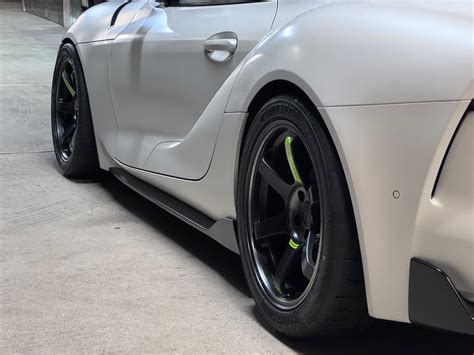2020 Supra TPMS Light? Don't Panic! A Comprehensive Guide
The dreaded tire pressure monitoring system (TPMS) light. That little warning indicator can send shivers down the spine of even the most seasoned driver, especially when it illuminates in a high-performance machine like the 2020 Toyota Supra. But before you succumb to anxiety and call for roadside assistance, take a deep breath. This guide will walk you through the potential causes of a TPMS light in your 2020 Supra and provide you with the steps to address the issue safely and efficiently.
Understanding Your 2020 Supra's TPMS
The TPMS in your 2020 Supra is a crucial safety feature designed to alert you to low tire pressure, a condition that can significantly impact handling, fuel efficiency, and tire wear. The system uses sensors embedded in each wheel to constantly monitor tire pressure and temperature. When pressure falls below a pre-set threshold, the TPMS light on your dashboard will illuminate.
Why is My 2020 Supra's TPMS Light On?
Several factors can trigger the TPMS light in your 2020 Supra. Let's explore the most common culprits:
1. Low Tire Pressure: The Obvious Culprit
This is the most frequent reason for a TPMS light. Simply check your tire pressure using a reliable gauge. Remember to check the pressure when the tires are cold (before driving). Your 2020 Supra's recommended tire pressure is typically found on a sticker located on the driver's side doorjamb or in your owner's manual. Inflate your tires to the specified pressure if they are low. The TPMS light should reset automatically after a short drive once the pressure is corrected.
2. Faulty TPMS Sensor
Sometimes, the problem isn't low pressure; it's a malfunctioning TPMS sensor. These sensors can fail due to age, damage, or other unforeseen circumstances. A faulty sensor might report inaccurate pressure readings, leading to the TPMS light illuminating even when tire pressure is fine. This often requires professional diagnosis and potentially sensor replacement.
3. Leaking Tire Valve
A slow leak in your tire valve stem can lead to gradual pressure loss and trigger the TPMS light. This is often easily addressed by replacing the valve caps or the valve stem itself, a relatively inexpensive repair.
4. Recent Tire Rotation or Change
If you recently rotated your tires or had new tires installed, the TPMS sensors may need to be re-learned by the vehicle's computer system. This process varies depending on the model year and the specific type of TPMS sensor. Consult your owner's manual or a qualified mechanic for instructions on re-learning your TPMS sensors.
5. Issues with the TPMS Module
In rare cases, the TPMS module itself might be faulty. This is a more complex issue requiring professional diagnosis and repair. A malfunctioning module won't allow the system to read the sensor data correctly, resulting in the TPMS warning light remaining on despite proper tire pressure.
What to Do if Your 2020 Supra's TPMS Light Stays On
If you've checked your tire pressure and it's within the recommended range, but the TPMS light remains illuminated, it's time to seek professional help. A qualified mechanic can use specialized diagnostic equipment to pinpoint the exact cause of the problem and perform the necessary repairs. Ignoring the light could lead to unsafe driving conditions.
How Often Should I Check My 2020 Supra's Tire Pressure?
Regularly checking your tire pressure is vital for safety and optimal performance. Aim to check your tire pressure at least once a month, and before long trips. Extreme temperature changes can also affect tire pressure. Always refer to your owner's manual for the recommended inflation pressure for your specific tire size and driving conditions.
By understanding the potential causes and taking the appropriate steps, you can address a TPMS light in your 2020 Supra confidently and safely, keeping you on the road and enjoying the thrill of driving this iconic sports car. Remember, your safety is paramount; don't hesitate to seek professional assistance if needed.

